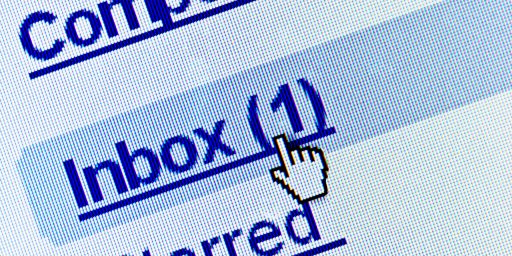Gmail Smart Labels
Gmail has introduced another feature to help people deal with inbox overload: Smart Labels.
Gmail has introduced another feature to help people deal with inbox overload: Smart Labels.
From the Gmail Blog: (“New in Gmail Labs: Smart Labels“):
People get a lot of email these days. On top of personal messages, there are group mailing lists, social network notifications, credit card statements, newsletters you might have signed up for, and promotional email from a shopping site you used once months ago. Gmail’s filters and labels were invented to help manage the deluge, but while I have about 100 filters that triage and label my incoming mail, most of my friends and family have all their messages in a giant unfiltered inbox.
Last year, we launched Priority Inbox to automatically sort incoming email and help you focus on the messages that matter most. Today, we’re launching a complementary feature in Gmail Labs called Smart Labels, which helps you classify and organize your email. Once you turn it on from the Labs tab in Settings, Smart Labels automatically categorizes incoming Bulk, Notification and Forum messages, and labels them as such. “Bulk” mail includes any kind of mass mailing (such as newsletters and promotional email) and gets filtered out of your inbox by default (where you can easily read it later), “Notifications” are messages sent to you directly (like account statements and receipts), and email from group mailing lists gets labeled as “Forums.”
If you already use filters and labels to organize your mail, you may find that you can replace your existing filters with Smart Labels. If you’re picky like me and still want to hold on to your current organization system, Smart Labels play nice with other labels and filters too. On the Filters tab under Settings, you’ll find that these filters can be edited just like any others. From there, you can also edit your existing filters to avoid having them Smart Labeled or change whether mail in a Smart Label skips your inbox (which you can also do by just clicking on the label, then selecting or unselecting the checkbox in the top right corner).
I’ve been using Priority Inbox since its outset and have found it remarkably good at flagging messages that I want to read. And it quickly learns from its mistakes if you flag and unflag the ones incorrectly sorted.
I already extensively filter my emails, so that, for example, all the emailed comments from the blog and everything related to Facebook and Twitter bypass the inbox and go directly into their own “folders.” (I read the comments constantly; the social media stuff, not so much.) And I also auto-flag messages from my wife, my boss, site advertisers, and others so that those messages are easier to search later. I’ll be interested to see if this proves to be a useful adjunct.
Rex Hammock thinks this will be bad moves for people, like himself, in the marketing biz:
As a recipient of email (aren’t we all?), I find this feature immediately lovable. However, as a media and marketing person obsessed with metrics that measure consumers’ reactions to and interactions with media and content, I feel I can safely predict this is not going to be the greatest of news for those of us who generate email-delivered content, even when that content follows all the best practices of permission-based marketing.
[…]
Yet despite all of this self-selection and permission, the open-rate (percentage of email distributed that is opened by recipients) of this email is lower than 20%. In other words, only two in ten subscribers to this email-delivered content actually open a specific mailing.
Bottomline: One of the lesser discussed issues by those who promote email marketing is this open rate problem. The promise of all those saved trees when everything is converted to digital media runs straight into the reality that a small percentage of people open such email — even from sources they request to receive such information from.
There are many reasons one can speculate when pondering that only 20% of people open such email to which they subscribe. Who knows? Maybe people only open 20% of the print publications to which they subscribe. Maybe 20% is a good open rate. I steadfastly refuse that notion (he said, looking over at the rapidly filling inbox on his desk).
I believe if we gathered up all of the reasons for such anemic open rates, we could classify them generally under one heading called, “We get too much email, so we delete or file away the ones we know we won’t read — but wish we could if we had the time.”
I’m certainly guilty of this. I’m subscribed to various mailings and listservs from extremely useful groups that I ultimately don’t take the time to read. I almost never unsubscribe because, as Hammond suggests, I want the option to read them if I do have the time. And, frankly, if I decide I don’t want to receive them anymore, I flag them as spam rather than unsubscribing.








Naughty James! Bad boy! *swats his nose with a rolled up newspaper*
I often subscribe to right wing mailers, and then mark them as spam until Google learns. I hope, and assume, that this makes the messages just a tiny bit more “spammy” in Google’s algorithms for everyone else.
Just my little part of fighting the vast right wing conspiracy.